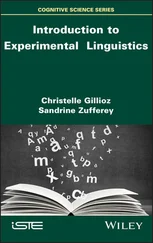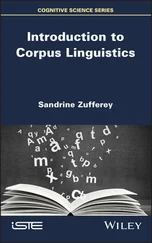Bloom, P. (2000) How Children Learn the Meanings of Words, Cambridge, Mass., MIT Press.
Boeckx, C. (2007) Understanding Minimalist Syntax, Oxford, Blackwell.
Booij, G. (2005) The Grammar of Words, Oxford, Oxford University Press.
Borden, G. and K. Harris (1984) Speech Science Primer (second edition), Baltimore, Md., Williams and Wilkins.
Britain, D. (1998) ‘Linguistic change in intonation: the use of high rising terminals in New Zealand English’, in P. Trudgill and J. Cheshire (eds.), The Sociolinguistics Reader, Volume I: Multilingualism and Variation, London, Arnold.
(2002) ‘Phoenix from the ashes?: The death, contact and birth of dialects in England’, Essex Research Reports in Linguistics 41: 42–73. www.essex.ac.uk/linguistics/
papers/errl_41b.pdf.
(forthcoming) ‘One foot in the grave?: dialect death, dialect contact and dialect birth in England’, International Journal of the Sociology of Language.
Brown, R. (1973) A First Language, Cambridge, Mass., Harvard University Press.
Bucholtz, M. (1999) ‘Why be normal?: language and identity practices in a community of nerd girls’, Language in Society 28: 203–23.
Buchstaller, J. (2005) ‘Putting perception to the reality test: the case of go and like’, University of Pennsylvania Working Papers in Linguistics (Papers from NWAVE 32) 10(2): 61–76.
Bybee, J. L. and D. I. Slobin (1982) ‘Rules and schemas in the development and use of the English past tense’, Language 58: 265–89.
Caplan, D. (1992) Language: Structure, Processing and Disorders, Cambridge Mass., MIT Press.
Carey, S. (1978) ‘The child as word learner’, in M. Halle, J. Bresnan and G. Miller (eds.), Linguistic Theory and Psychological Reality, Cambridge Mass., MIT Press.
(1985) Conceptual Change in Childhood, Cambridge Mass., MIT Press.
Carney, A. (2006) Syntax: A Generative Introduction (second edition), Oxford, Blackwell.
Carreiras, M., J. Andoni Duñabeitia and M. Perea (2007) ‘Reading words, NUMB3R5 and $YMBOL$’, Trends in Cognitive Sciences 11: 454–5.
Carstairs-McCarthy, A. (1992) Current Morphology, London, Routledge.
(2002) English Morphology, London, Longman.
Chambers, J. K. (1992) ‘Dialect acquisition,’ Language 68: 673–705.
(2002) Sociolinguistic Theory: Linguistic Variation and its Social Significance, Oxford, Blackwell.
Chambers, J. K. and P. Trudgill (1998) Dialectology (second edition), Cambridge, Cambridge University Press.
Chambers, J. K., P. Trudgill and N. Schilling-Estes (eds.) (2002) The Handbook of Language Variation and Change, Oxford, Blackwell.
Chiat, S. (2000). Understanding Children with Language Problems, Cambridge:
Cambridge University Press.
Chierchia, G. and S. McConnell-Ginet (1990) Meaning and Grammar: An Introduction to Semantics, Cambridge, Mass., MIT Press.
Chomsky, N. (1965) Aspects of the Theory of Syntax, Cambridge, Mass., MIT Press.
(1966) Cartesian Linguistics: A Chapter in the History of Rationalist Thought, London, Harper and Row.
Bibliography
417
(1972) Language and Mind (enlarged edition), New York, Harcourt Brace Jovanovich.
(1975) Reflections on Language, New York, Pantheon Books.
(1980) Rules and Representations, New York, Columbia University Press.
(1986) Knowledge of Language: Its Nature, Origin and Use, New York, Praeger.
(1988) Language and Problems of Knowledge: The Managua Lectures, Cambridge,
Mass, MIT Press.
(1995a) ‘Language and nature’, Mind 104: 1–61.
(1995b) The Minimalist Program, Cambridge, Mass., MIT Press.
(2002) On Nature and Language (ed. L. Rizzi and A. Belletti), Cambridge, Cambridge University Press.
Chomsky, N. and M. Halle (1968) The Sound Pattern of English, New York, Harper and Row.
Clahsen, H. (2008) ‘Chomskyan syntactic theory and language disorders’, in M. J. Ball, M. Perkins, N. Mueller and S. Howard (eds.), The Handbook of Clinical Linguistics, Oxford, Blackwell.
Clark, E. (1973) ‘What’s in a word?’, in T. Moore (ed.), Cognitive Development and the Acquisition of Language, New York, Academic Press.
Coates, R. (2003) Word Structure (second edition), London, Routledge.
Coupland, N. (1984) ‘Accommodation at work: some phonological data and their implications’, International Journal of the Sociology of Language 46: 49–70.
(2007) Style: Language Variation and Identity, Cambridge, Cambridge University Press.
Cruse, D. (1986) Lexical Semantics, Cambridge, Cambridge University Press.
Davenport, M. and S. J. Hannahs (1998) Introducing Phonetics and Phonology, London, Arnold.
de Villiers, J. (1974) ‘Quantitative aspects of agrammatism in aphasia’, Cortex 10: 36–54.
Dowty, D. R. (1991) ‘Thematic proto-roles and argument selection’, Language 67: 574–619.
Eckert, P. (2000) Linguistic Variation as Social Practice: The Linguistic Construction of Identity in Belten High, Oxford, Blackwell.
Fasold, R. (1980) ‘The relation between black and white speech in the south’, manuscript, School of Languages and Linguistics, Georgetown University, Washington, DC.
Ferguson, C. A., L. Menn and C. Stoel-Gammon (eds.) (1992) Phonological
Development: Models, Research, Implications, Timonium, Md, York Press.
Field, J. (2003) Psycholinguistics: A Resource Book for Students, London, Routledge.
(2004) Psycholinguistics: The Key Concepts, London, Routledge.
Fodor, J. A. (1981) ‘The present status of the innateness controversy’, in J. A. Fodor, Representations, Hassocks, Harvester Press.
(1983) Modularity of Mind, Cambridge Mass., MIT Press.
Fodor, J. A., M. F. Garret, E. C. T. Walker and C. H. Parkes (1980) ‘Against definitions’, Cognition 8: 263–367.
Friedmann, N. (2001) ‘Agrammatism and the psychological reality of the syntactic tree’, Journal of Psycholinguistic Research 30: 71–90.
Fromkin, V. A. (ed.) (1973) Speech Errors as Linguistic Evidence, The Hague, Mouton.
(1980) Errors in Language Performance. New York, Academic Press.
Garman, M. (1990) Psycholinguistics, Cambridge, Cambridge University Press.
Goodluck, H. (1991) Language Acquisition: A Linguistic Introduction, Oxford, Blackwell.
418
Bibliography
Gopnik, M. (1990) ‘Feature blindness: a case study’, Language Acquisition 1: 139–64.
Gordon, P. (1985) ‘Level ordering in lexical development’, Cognition 21: 73–93.
Grimshaw, J. (1993) ‘Minimal projection, heads and optimality’, manuscript, Rutgers University.
Grodzinsky, Y. (1990) Theoretical Perspectives on Language Deficits, Cambridge, Mass., MIT Press.
Grundy, P. (2000) Doing Pragmatics, London, Arnold.
Guasti, M.-T (2002) Language Acquisition: The Growth of Grammar, Cambridge, Mass., MIT Press.
Gussenhoven, C. and H. Jacobs (1998) Understanding Phonology, London, Arnold.
Hammond, M. (1999) The Phonology of English, Oxford, Oxford University Press.
Harley, H. (2006) English Words: A Linguistic Introduction, Oxford, Blackwell.
Harley, T. A. (2001) The Psychology of Language; From Data to Theory (second edition), Hove, East Sussex, Psychology Press.
Haskell, T. R, M. C. MacDonald and M. S. Seidenberg (2003) ‘Language learning and innateness: some implications of Compounds Research’, Cognitive Psychology 47: 119–63.
Haspelmath, M. (2002) Understanding Morphology, London, Arnold.
Hauser, M. D., N. Chomsky and W. T. Fitch (2002) ‘The Faculty of Language: what is it, who has it and how did it evolve?’ Science 298: 1569–79.
Henry, A. (1995) Belfast English and Standard English: Dialect Variation and Parameter Setting, Oxford, Oxford University Press.
Hill, J. A. C. (1983) A Computational Model of Language Acquisition in the Two Year Old, Bloomington, Ind., Indiana Linguistics Club.
Читать дальше
![Andrew Radford Linguistics An Introduction [Second Edition] обложка книги](/books/397851/andrew-radford-linguistics-an-introduction-second-cover.webp)











